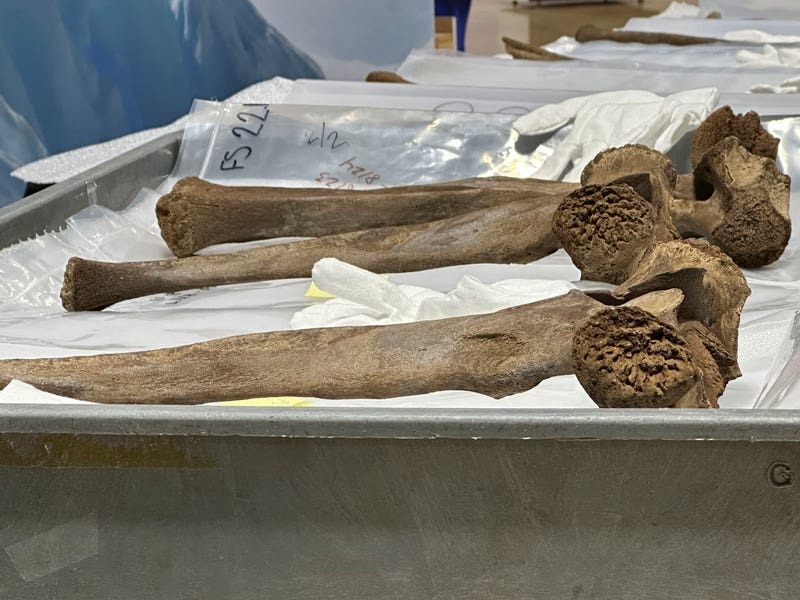A selection of bones belonging to a juvenile mastodon which roamed the woods of Michigan 13,000 years ago is now on display at a museum, after workers unearthed them by chance last year.
Excited museum officials showed off some of the long-extinct pachyderm’s remains on Thursday, although much of the skeleton still is going through the drying process.
Mastodons might seem similar to woolly mammoths, but they were shorter and stockier – imagine a mix between a woolly mammoth and modern elephant – and their tusks were shorter and less curved.
The Michigan skeleton was discovered by Kent County workers digging a drainage ditch about 30 miles north of Grand Rapids. Grand Rapids Public Museum CEO Dale Robertson called the discovery “amazing”.
It’s not unusual to find mastodon bones, especially in the Midwest. But what’s special about this discovery is that as much as 80% of the mastodon’s bones are intact, “which is really, really impressive”, said Cory Redman, the museum’s science curator.
“Anything over 20 you’re super excited about, so 75 to 80% is absolutely fantastic,” Mr Redman said.
Unfortunately, no tusks were found and only a partial skull, which is displayed under glass near a large photo of the excavation site.
The skeleton was discovered last August on private property belonging to the Clapp family, who decided to donate it to the museum.
A selection of the bones, now known as the Clapp Family Mastodon, will be publicly displayed as part of the museum’s exhibition Ice Age: Michigan’s Frozen Secrets, which opens on Saturday.
The exhibit also features an array of creatures from the Pleistocene period. The museum acquired 63 new fossils and casts, allowing visitors to touch real fossilised bones and teeth.
But the Clapp Family Mastodon is the star of the show.
The juvenile was between 10 and 20 years old when it died, said Redman, which radiocarbon dating puts at about 13,210 years ago.
“What makes this specimen unique and so exciting is it’s a juvenile. It’s a young animal. Typically, when you find them, they’re adults. And also, the degree of completeness,” Mr Redman said.






